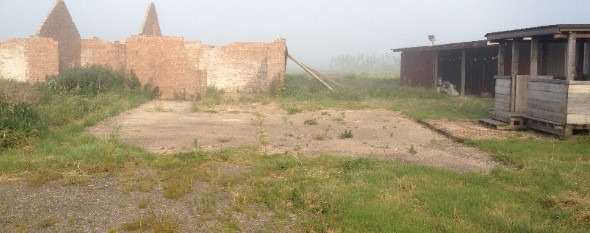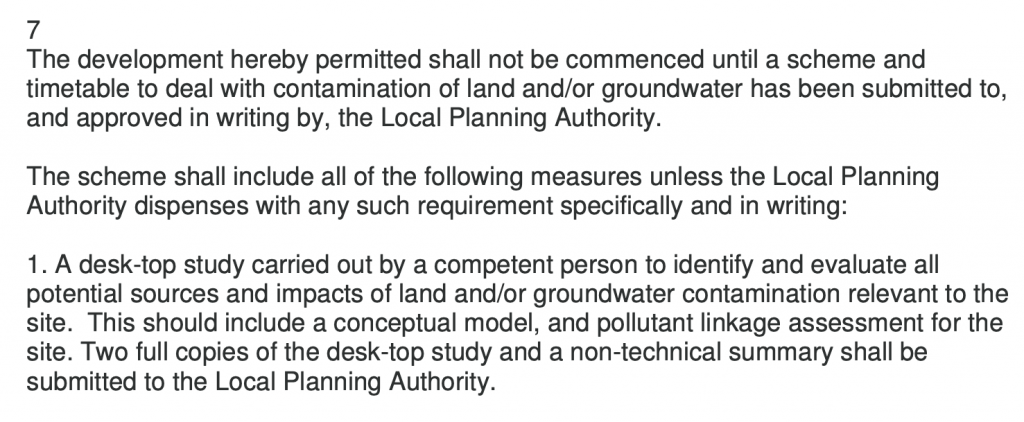Barn Conversion, Common Road, Throckenholt, Cambridgeshire
Case Study Reference: 12-06-01
Planning Authority: Fenland District Council
Planning Reference: F/YR08/0662/F and F/YR12/3076/COND
Synopsis:
Given the sensitive nature of the development (residential) and the history of the site a contaminated land planning condition was attached to the decision notice for the proposed development.
The first stage of discharging the condition was to prepare a Phase I desk study report in order to determine if the site has the potential to be impacted by elevated levels of contamination, and to determine the source as well as the likelihood of the risk occurring.
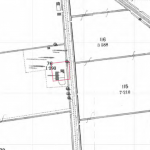 A desk study determines what issues relating to historical contamination may affect the site, this is undertaken by reviewing the site history using a combination of O.S. maps, aerial, plates and street level imagery, a review of data held by regulatory bodies (Environment Agency, local authority, BGS etc.) as well as a site walkover survey.
A desk study determines what issues relating to historical contamination may affect the site, this is undertaken by reviewing the site history using a combination of O.S. maps, aerial, plates and street level imagery, a review of data held by regulatory bodies (Environment Agency, local authority, BGS etc.) as well as a site walkover survey.
The history of the site and surrounds were researched using a combination of Ordnance 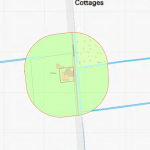 Survey (O.S.) maps, street level imagery and aerial plates, this revealed the site was developed prior to the first edition O.S. maps and was occupied by a barn, changes to the layout were noted in the 1902 and 1950 maps.
Survey (O.S.) maps, street level imagery and aerial plates, this revealed the site was developed prior to the first edition O.S. maps and was occupied by a barn, changes to the layout were noted in the 1902 and 1950 maps.
A railway line was identified 160m north east of the site, the line was dismantled by the 1993 map.
The planning history of the site was reviewed as part of the desk based research, this revealed three previous applications. The reports associated with any previous application were studied, a previous Phase I report was noted and reviewed, no salient information was obtained.
The published geological maps identified the site as being underlain by Tidal Flat deposits which in turn were underlain by the Oxford Clay Formation.
Data provided by regulatory bodies identified a pollution incident on the site involving biodegradable materials with a minor impact on land.
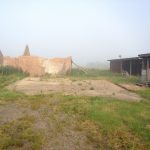 On completion of the desk based research a site reconnaissance
On completion of the desk based research a site reconnaissance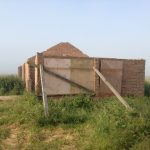 visit was undertaken, a static caravan was present on the site as well as a barn in a state of disrepair, concrete hard-standing, a gravelled area and overgrown landscaped areas were present.
visit was undertaken, a static caravan was present on the site as well as a barn in a state of disrepair, concrete hard-standing, a gravelled area and overgrown landscaped areas were present.
Chemical storage was noted in the barn.
Once the walkover survey was completed a qualitative risk assessment was undertaken on the potential sources of contamination identified in the desk study report in order to determine if any warranted further investigation, this concluded that the made ground on the site as well as the potential for pesticides posed a potential risk to human health.
The report proposed that further works were required to assess the risks of pesticides, with the potential risk posed by made ground to be resolved either by site investigation or remediation in lieu of further works.

